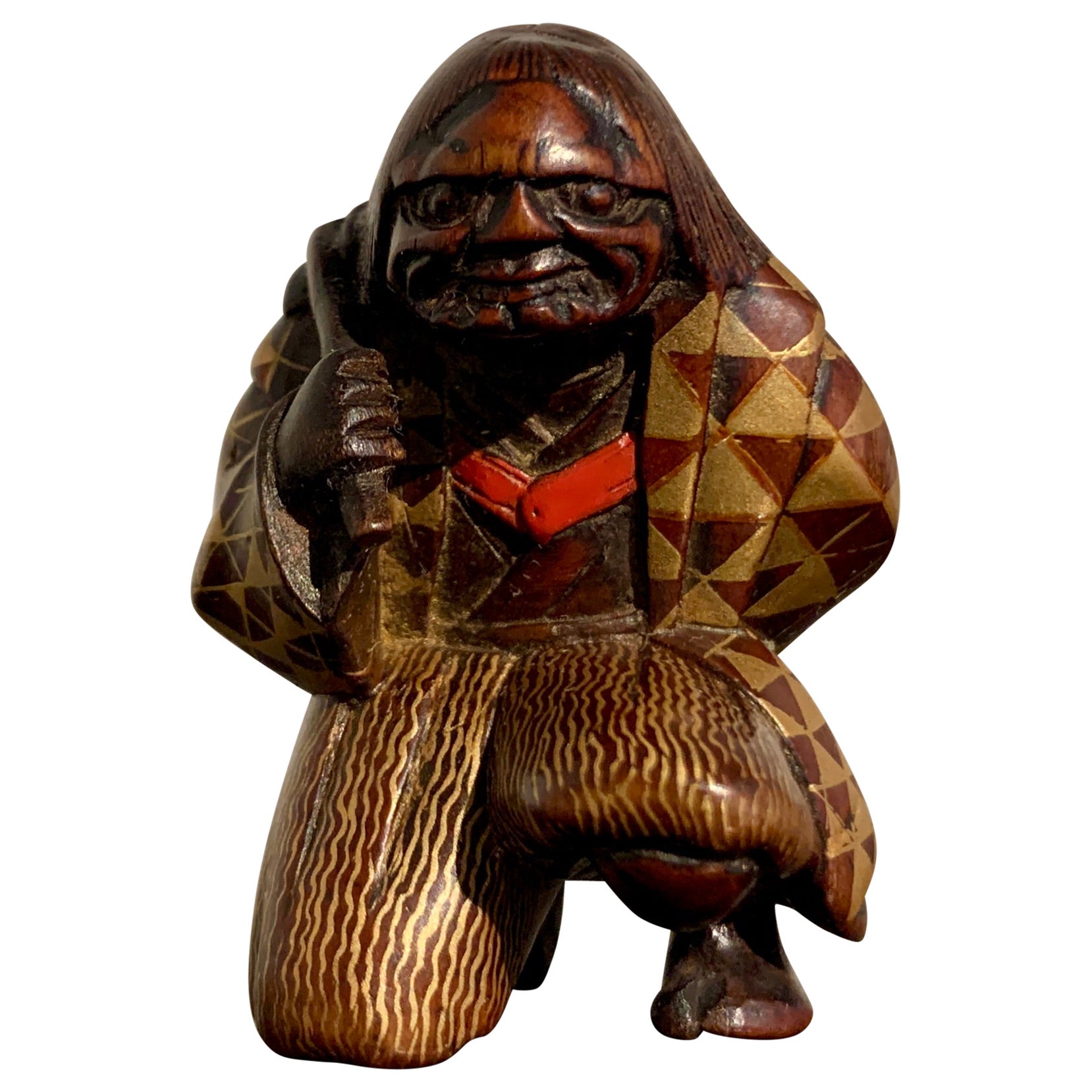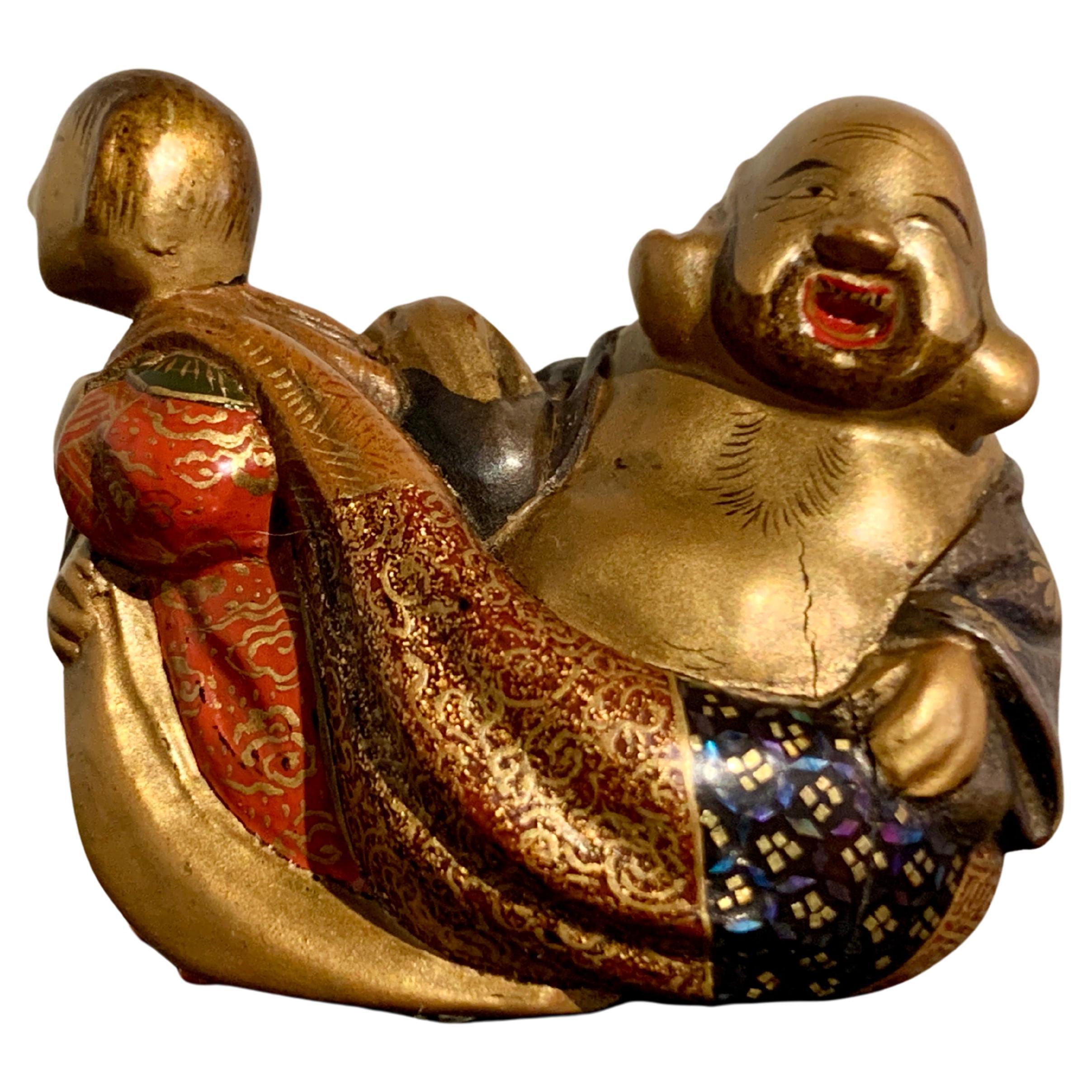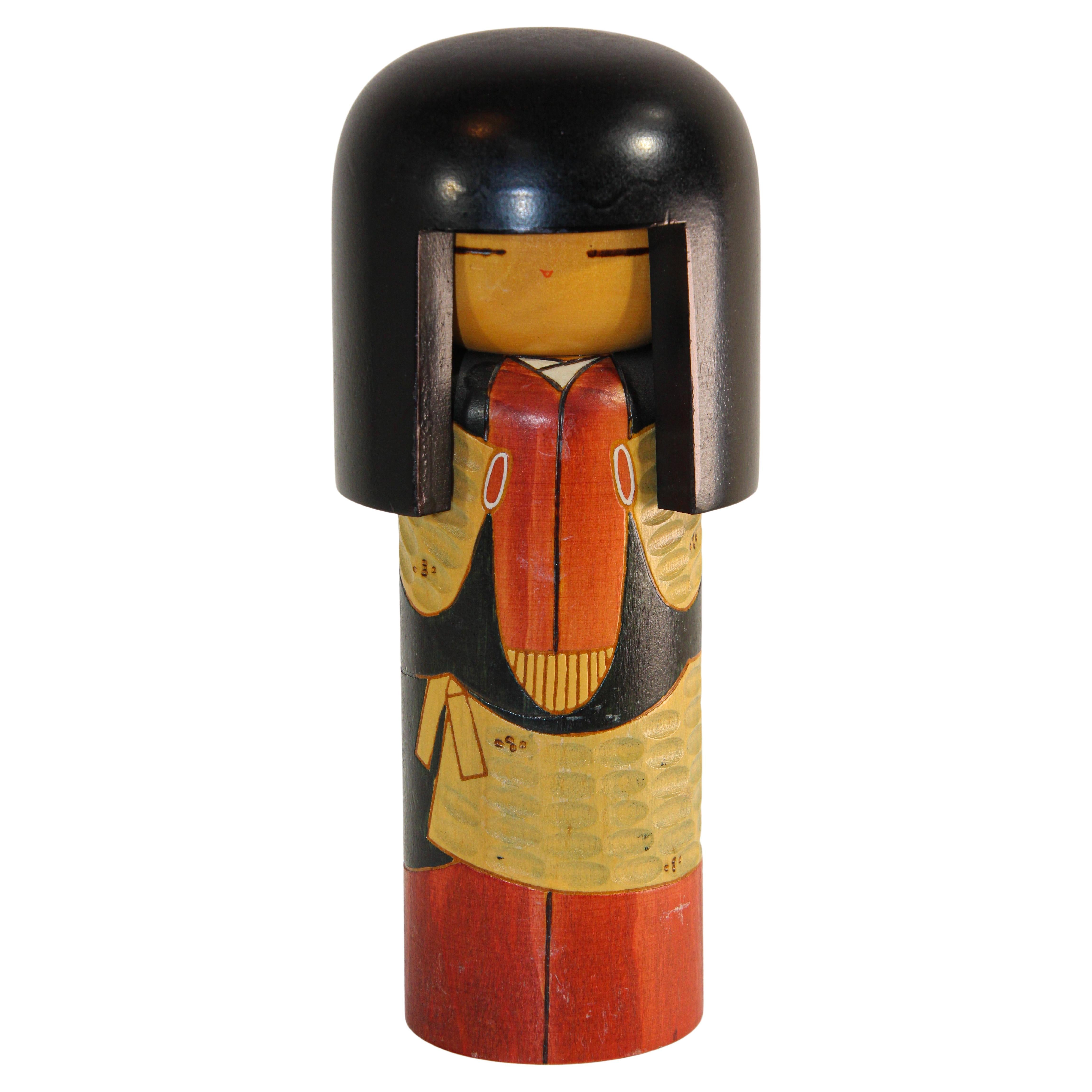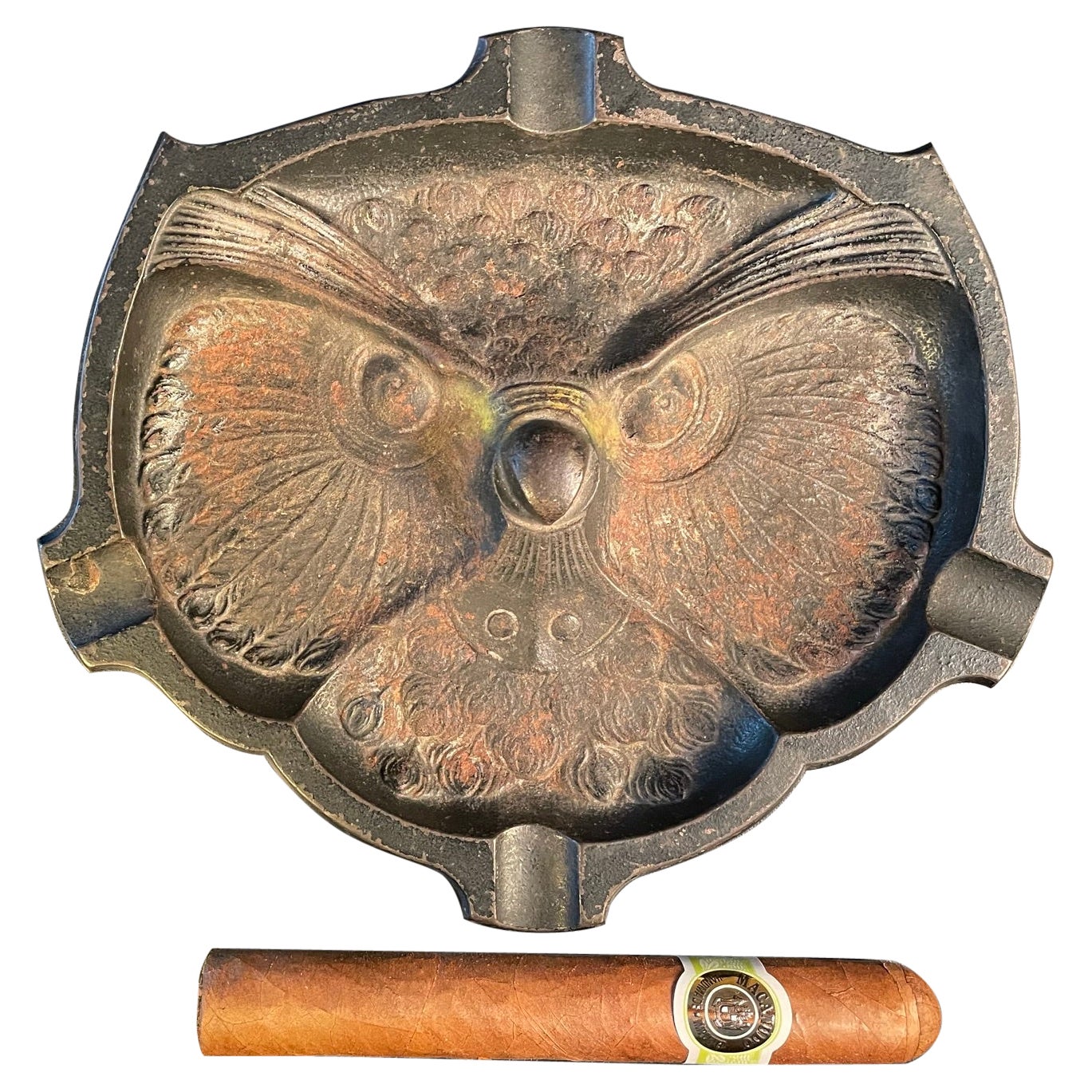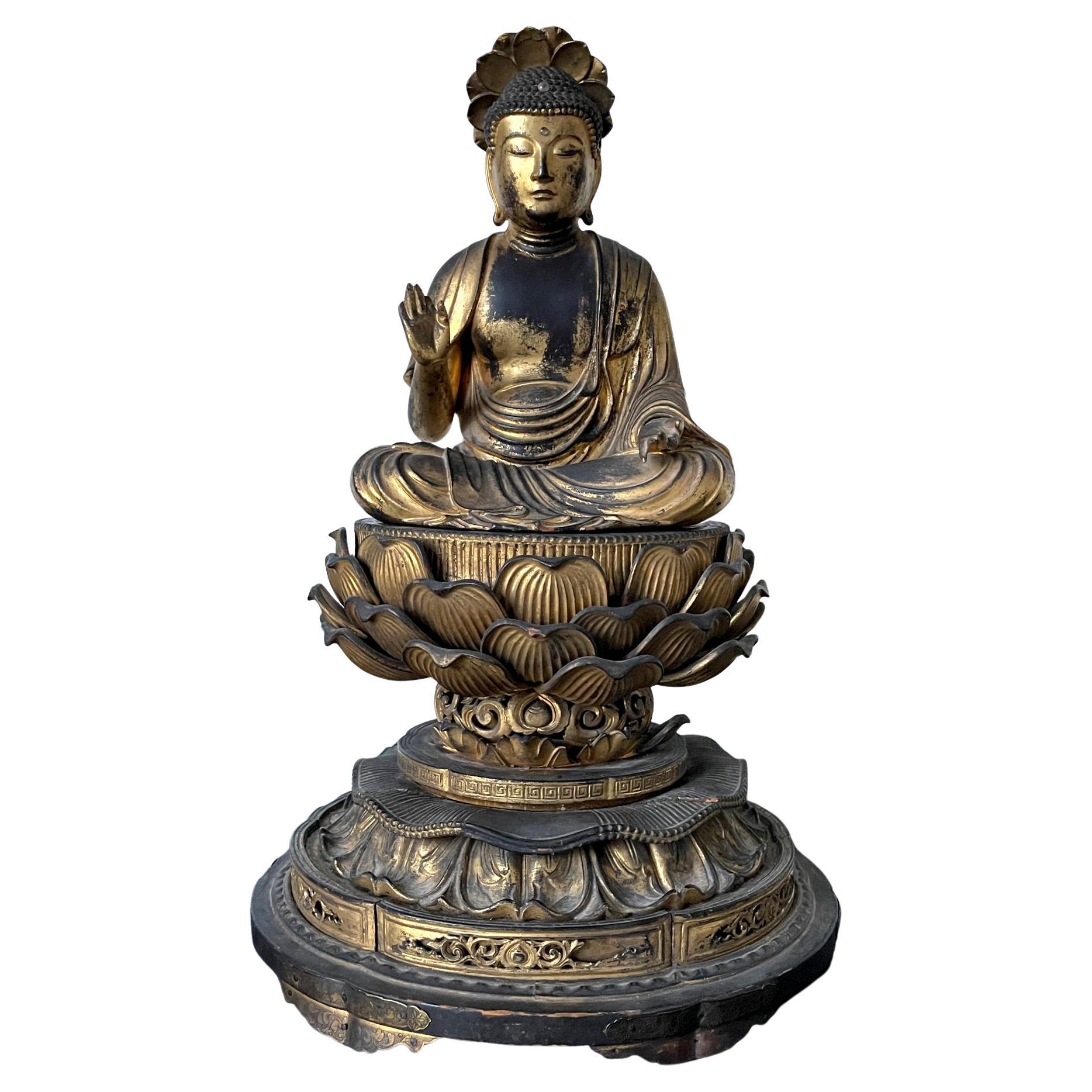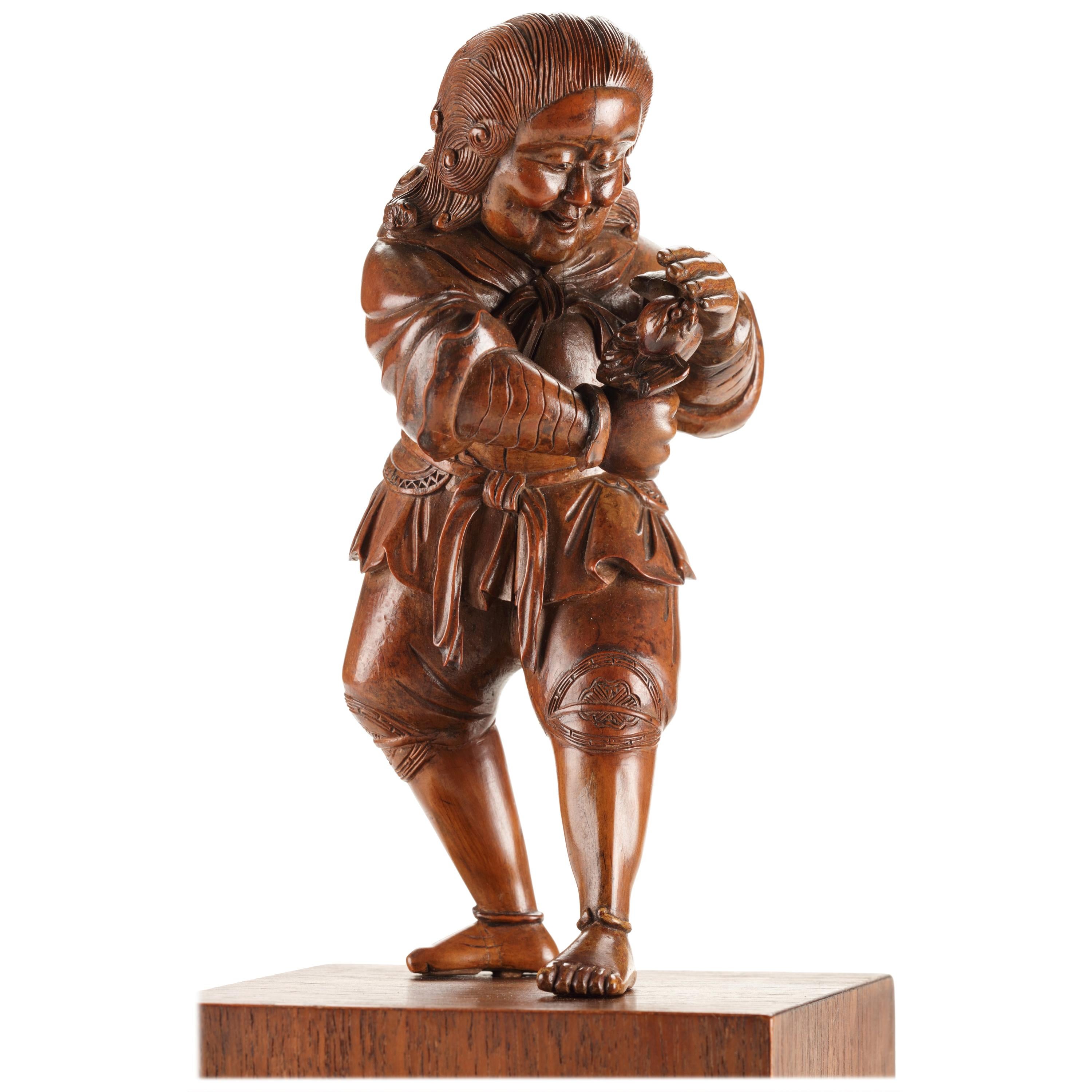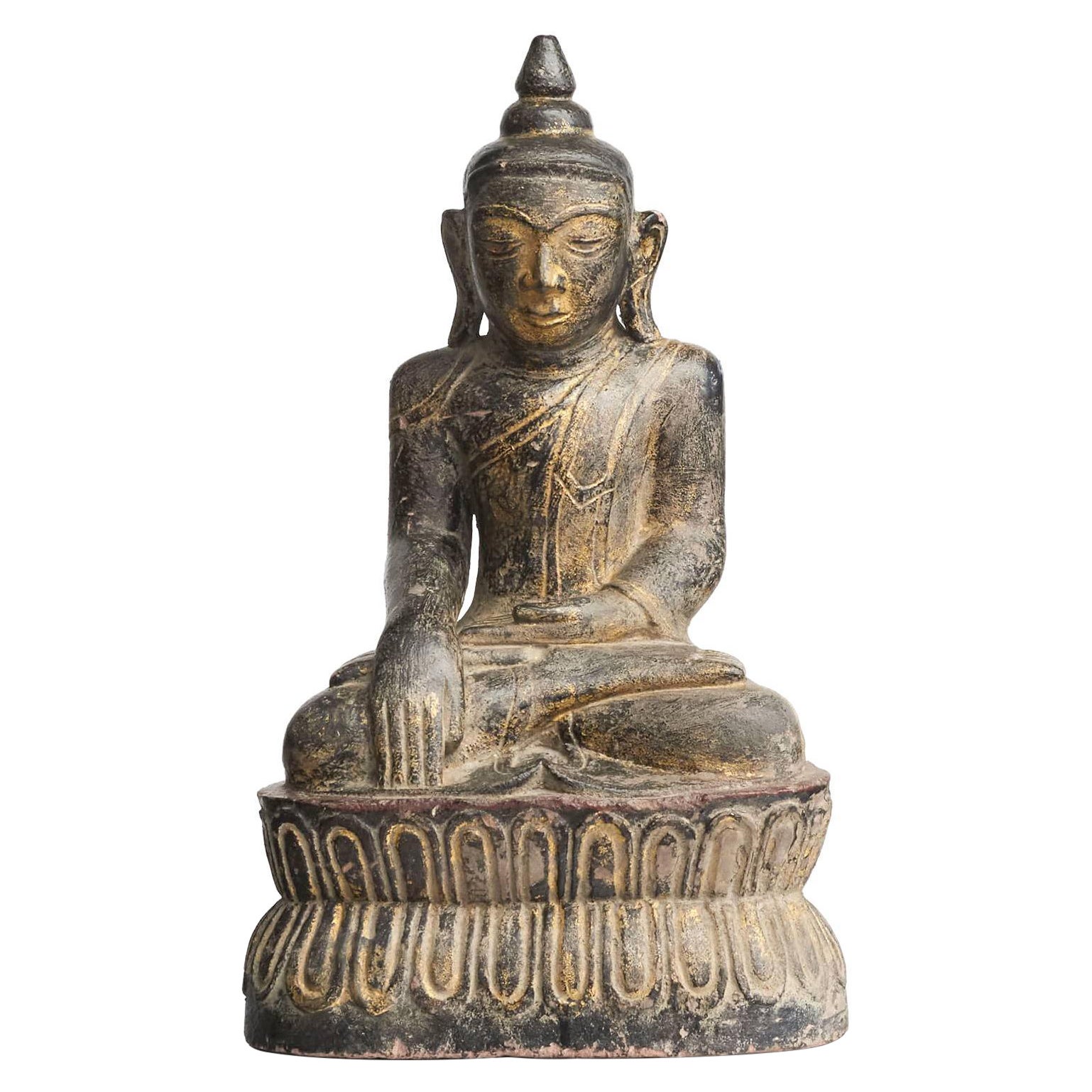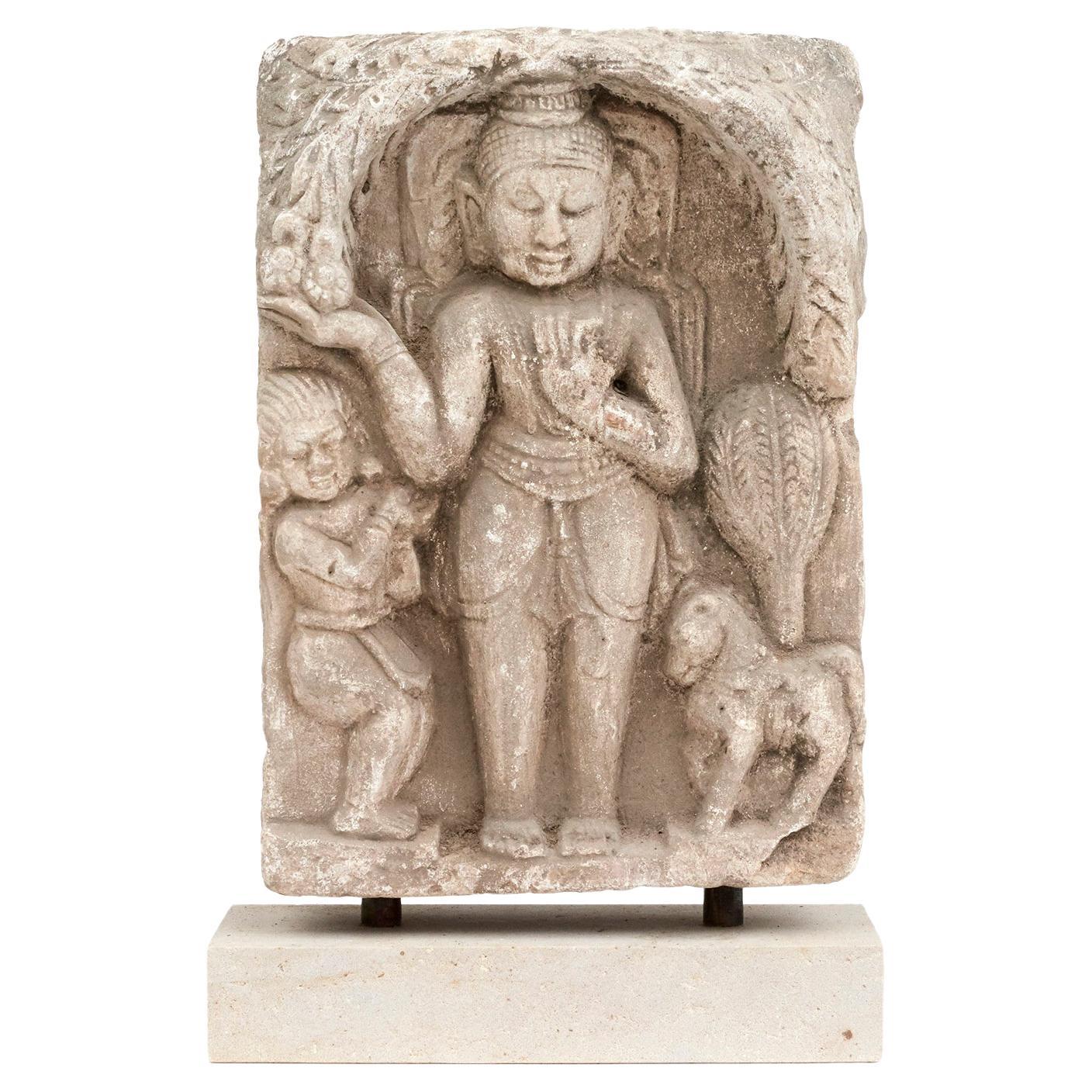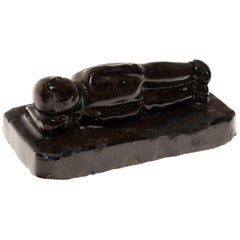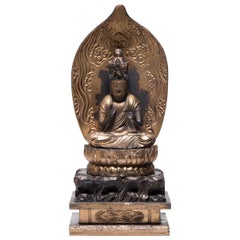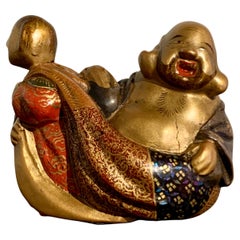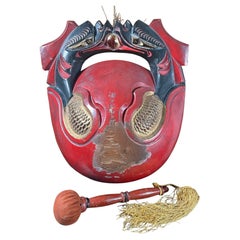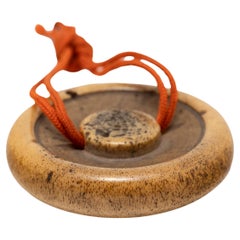
Japanese Shiitake Mushroom Netsuke Charm, c. 1850
View Similar Items
Want more images or videos?
Request additional images or videos from the seller
1 of 5
Japanese Shiitake Mushroom Netsuke Charm, c. 1850
About the Item
- Dimensions:Height: 1 in (2.54 cm)Width: 1.75 in (4.45 cm)Depth: 1.75 in (4.45 cm)
- Style:Meiji (Of the Period)
- Materials and Techniques:
- Place of Origin:
- Period:
- Date of Manufacture:circa 1850
- Condition:Wear consistent with age and use.
- Seller Location:Chicago, IL
- Reference Number:Seller: CFC6231stDibs: LU820039326482

About the Seller
4.9
PAGODA RED is a renowned resource for designers as well as collectors of contemporary and ancient Chinese, Korean and Japanese art. They offer a curated edit of fine and provincial furniture, ceramics, scholars' objects, and paintings and textiles, each piece historically and geographically authentic.
Diamond Seller
These expertly vetted sellers are 1stDibs' most experienced sellers and are rated highest by our customers.
Established in 1997
1stDibs seller since 2006
1,419 sales on 1stDibs
Typical response time: 1 hour
More From This SellerView All
- Chinese Charm Token Shoe with Compartment, c. 1850Located in Chicago, ILOriginally tucked in a pocket as a charm, this tiny shoe was kept close at hand as a talisman for marital happiness. Meticulously carved from wood, the shoe is decorated with a double happiness symbol, the traditional symbol for conjugal bliss. A lovely Valentine’s Day or anniversary gift, the charm has a compartment ready to be filled with a note or small gift...Category
Antique Mid-19th Century Chinese Qing Sculptures and Carvings
MaterialsPine
- Reclining Ho Ho Boy Charm Weight, c. 1850Located in Chicago, ILThis 19th century weight originally used its heft domestically to protect a child. A simple yet ingenious concept, the stone anchored the baby’s swaddling cloth to the bed so the chi...Category
Antique Mid-19th Century Chinese Qing Sculptures and Carvings
MaterialsCeramic
- Japanese Gilt Seated Kannon Figure, circa 1850Located in Chicago, ILIntricately carved and finished with gilt black lacquer, this seated figure depicts the bodhisattva Guanyin, known in Japanese Buddhism as Kannon. Described as the "Buddha of Infinite Compassion," Kannon is the embodiment of mercy and makes himself available to all who call upon him with all their mind. Kannon is depicted here seated in diamond position upon a double lotus plinth, set above a stepped base. He is dressed in gracefully draped robes and wears a tall crown bearing a minuscule figure of Amida, the Buddha of Infinite Light. He has a serene expression of calm and holds his right hand in the abhaya mudra, a gesture of comfort, blessing, and protection. Backed by a magnificent leaf-form nimbus, this Kannon figure...Category
Antique Mid-19th Century Japanese Edo Sculptures and Carvings
MaterialsWood, Lacquer
- Chinese Carved Stone Snuff BottleLocated in Chicago, ILA mixture of finely powdered tobacco, herbs, and spices, snuff was introduced to China in the 17th century by Western diplomats. Initially reserved for ranking members of Qing-dynast...Category
20th Century Chinese Qing Sculptures and Carvings
MaterialsStone
- Chinese Lotus Leaf Snuff Bottle, c. 1900Located in Chicago, ILA mixture of finely powdered tobacco, herbs, and spices, snuff was introduced to China in the 17th century by Western diplomats. Initially reserved for ranking members of Qing-dynast...Category
Early 20th Century Chinese Qing Sculptures and Carvings
MaterialsPorcelain
- Chinese Carved Stone Snuff BottleLocated in Chicago, ILA mixture of finely powdered tobacco, herbs, and spices, snuff was introduced to China in the 17th century by Western diplomats. Initially reserved for ranking members of Qing-dynast...Category
20th Century Chinese Qing Sculptures and Carvings
MaterialsStone
You May Also Like
- Carved Boxwood and Lacquer Netsuke of a Noh Dancer, Meiji Period, JapanLocated in Austin, TXA fine lacquer decorated carved boxwood netsuke of a Noh dancer in a Hannya role, unsigned, Meiji period, late 19th century, Japan. The boxwood netsuke finely carved as a kneeling Noh dancer dressed in striking geometric patterned robes. The actor holds an opened war fan behind their back in one hand, a Shinto wand slung over the shoulder in the other. The war fan, tessen, decorated in red lacquer with a golden rising sun at the center. Tessen were sturdy fans used by samurai as protective devices, and sometimes as weapons. The wand, called an onusa, is a traditional Shinto ritual implement comprised of folded paper streamers, shide, attached to a wooden wand, often used in purification rituals. Here, the shide are crafted from silver maki-e, with the handle of the natural boxwood. The actor wears a fierce and unearthly hannya mask...Category
Antique 1890s Japanese Meiji Sculptures and Carvings
MaterialsBoxwood, Lacquer
- Boxwood and Lacquer Netsuke of Hotei by Shunsho, Meiji period, circa 1900, JapanLocated in Austin, TXA charming and finely decorated carved and lacquered boxwood netsuke of Hotei by Shunsho (probably Shunsho XI, Masaoki), Meiji period, circa 1900, Japan. This delightful and colorful netsuke features the beloved figure Hotei, one of the Seven Lucky Gods. The god of fortune and happiness is seated upon his treasure bag, and being dragged by a smiling child. Carved from boxwood and decorated in bright lacquers of gold, silver, red, black and green. Hotei's chest and ample stomach mostly exposed, his skin covered in gold lacquer. Large elephantine ears frame his bearded face. His red-lipped mouth open in an uproarious laugh. Hotei's treasure bag formed as a patchwork of various brocades in gold, red, and black lacquer. The black lacquer further decorated in the lac burgaute...Category
Antique Early 1900s Japanese Meiji Sculptures and Carvings
MaterialsBoxwood, Lacquer
- Big Antique Japanese Zen Temple Chanting Bell Genuine Hand Carved MokuygoLocated in South Burlington, VTJapanese antique temple find from the Meiji period, 19th century A large hand carved hand lacquered, and hand gilded wooden chanting bell mok...Category
Antique 19th Century Japanese Meiji Sculptures and Carvings
MaterialsWood
- Vintage Traditional Japanese Kokeshi Wood DollLocated in North Hollywood, CAKokeshi or Kokashi doll handmade by Japanese artisans from wood. The dolls have a simple trunk as a body and an enlarged head. One characteristic of Kokeshi dolls is their lack of arms and legs. signed underneath as follow. Kokashi Doll Kegon Waterfall Japan 1987. Kokeshi (???, ???), are simple wooden Japanese dolls with no arms or legs that have been crafted for more than 150 years as a toy for...Category
Late 20th Century Japanese Japonisme Sculptures and Carvings
MaterialsWood
- Hand Painted Wood Japanese Traditional Kokeshi DollLocated in Barcelona, BarcelonaJapanese doll called Kokeshi of the early 20th century. Provenance from the northern Japan. Dolls shapes and patterns are particular to a certain area and are classified under eleven types. Handmade by Japanese artisants from wood. Have a simple trunk as a body and an enlarged head. One characteristic of Kokeshi dolls...Category
Early 20th Century Japanese Edo Sculptures and Carvings
MaterialsWood
- Japanese Unique Old Owl Face Cigar Stogie TrayLocated in South Burlington, VTEven if you dont smoke cigars- delightful to display Japanese Unique Old Owl Face Cigar Stogie Tray This handsome Japanese quality over sized iron "Owl" faced cigar tray...Category
Early 20th Century Japanese Taisho Sculptures and Carvings
MaterialsIron
Recently Viewed
View AllMore Ways To Browse
Lapis Snuff Bottle
Budai Statue
Balinese Wooden Bust
Vintage Japanese Hand Painted Eggs 10
Temple Artifacts
Chinese Buddha Carving
Chinese Hand Carved Wooden Sculptures And Carvings
Buddhist Stupa
Wall Hanging With Dragon
Antique Large Wooden Figurines
Chinese Art Metal
Large Tall Basket
Pesce Gaetano Glass
Pair Green Glass Sconces
Traditional Tribal Hand Knotted Wool Gray Area Rug
Charlotte Perriand Low Table
Coffee Table With Raised Edge
French Mid Century Desk Accessories
